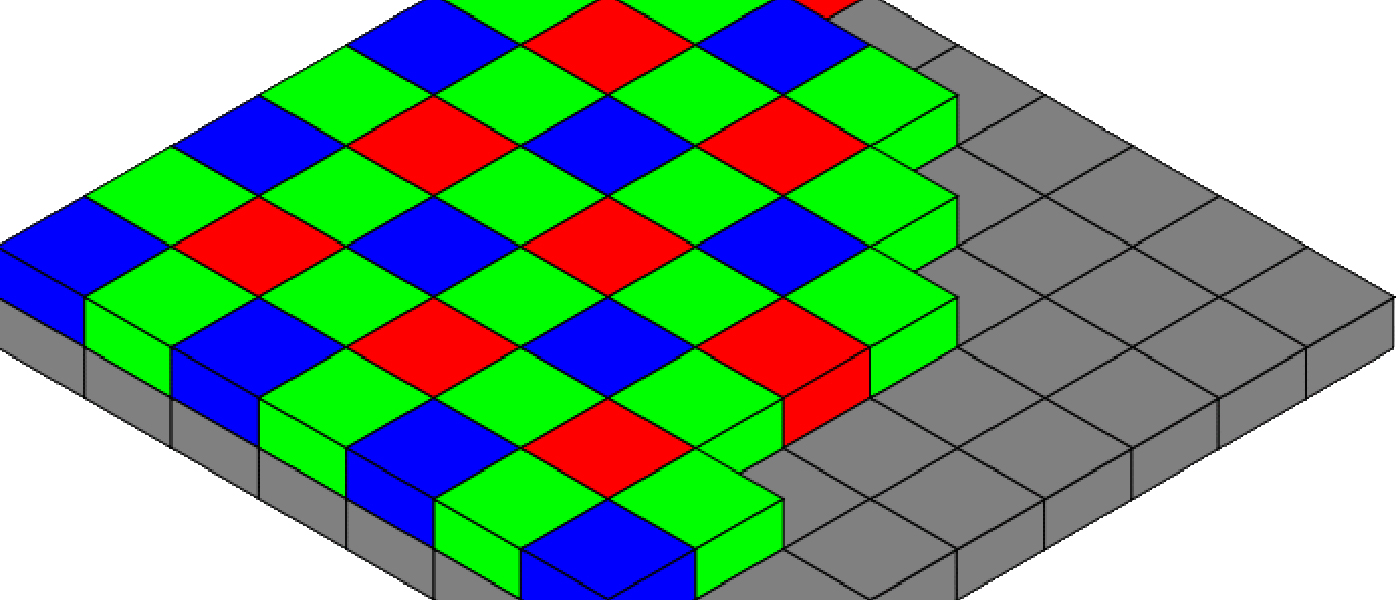Launched in 2015, MQA was developed by Meridian Audio co-founder Bob Stuart, in conjunction with British mathematician Peter Craven. Since then, MQA has spun off from Meridian to become a stand-alone company.
Like many other new “formats” that come out, there were a lot of questions about it: How much source material would be available, would we need to get new equipment to enjoy it, and of course…would we need to buy the White Album again?
But before we get into some of those details, let’s take a closer look at MQA and what it is…
MQA’s website describes it as “a revolutionary end-to-end technology that delivers master quality audio in a file that’s small enough to stream or download. What’s more, it’s backwards compatible, so will play on any device. And because it’s fully authenticated, you can be sure you’re hearing exactly what the artist approved in the studio.”
Here’s a look at the MQA Process flow from original master to playback per their website.
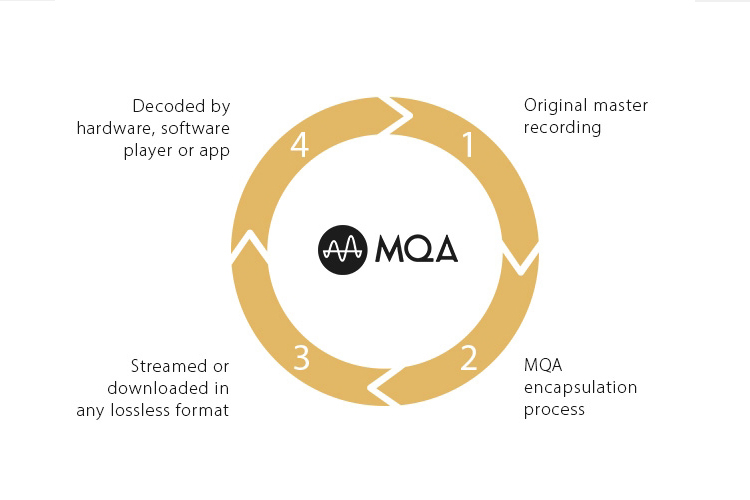
Straightforward and simple, right?! Well, yes and no.
For those interested in listening to digital music at its highest quality, our options were limited to high resolution music files downloaded from online retailers like HDtracks or Acoustic Sounds to name a few. Once you have the right software and a DAC (Digital to Analog Converter) capable of playing those files, you could thoroughly enjoy your favorite musicians with CD sound quality or better.
But with that, we had several drawbacks. For one, the file sizes are large, therefore they take up a considerable amount of hard drive space. And also because of the large file sizes, download times are lengthy and annoying for those of us lacking patience. Also, the files can get quite expensive if you’re looking to re-create your entire music collection (usually $20~$25 per album!). And finally, you won’t find much in the line of streaming services offering high resolution music given their file sizes. As the resolution goes up, so does the size of the file.
MQA (Master Quality Authenticated) has offered to us music lovers a way to listen to our favorite tunes in a manner that was intended by the original recording artists, without the limitations of file sizes previously described. Using a manner of “folding” the music files like origami, MQA is able to take the original analog recording resolution, and deliver it in a smaller file. Once that file gets processed through an MQA encoder (more on that in a bit), it then “unfolds” the file back to its fullest and highest resolution, thus providing us with a very similar resolution to what was produced in the recording studio. Granted, your playback quality will ultimately be determined by the system you have, but at least you’re working with a file that should at least in theory, mimic that of the original recording.
In addition to providing us with music near or at its original resolution in a relatively small (stream-able) file size, MQA has also addressed other potential issues with the analog to digital conversion. Time-domain smearing in A to D conversion may result in congestion and distortions, and in the traditional high resolution files, these distortions may still exist. But according to MQA (the company), these timing issues are corrected as part of the MQA (Full Decoder) process, resulting in a high quality of sound that is more aligned with that of the original studio recording.
The entire process of encoding and decoding of MQA to retain the integrity and provenance of the original recording is what is known as Authentication. When played through an MQA-equipped DAC, the MQA Indicator light will illuminate, verifying (or authenticating) that you are receiving the same quality recording as produced by the engineers and artists.
The subject of exactly how we would take advantage of the MQA technology has been a hot topic since it was introduced. When there’s the real chance that consumers have to yet again pony up for new equipment, the arguments for and against advancements in technology tend to get loud. I get it…my UHD 4K television and theater processor that I purchased just 2 years ago can’t even take advantage of the real UHD 4K source that’s now finally available (that’s a rant for another article, but I think you get my point).
Fortunately, MQA has settled on 3 different ways that we can enjoy the benefits of the higher resolution music files. These are known as MQA Core, Full Decoder, and MQA Renderer.
The first, and in my opinion the most important level to talk about is MQA Core. In order for MQA to downsize the files in the folding process, something has to be given up. In this case, it is bit depth which goes from 24 to 17 using dither noise shaping, as disclosed in an MQA patent. Early arguments about this reduction in bit depth were quite loud, but since the industry has finally been able to actually test MQA Core (via TIDAL streaming service) in the past month, they have found it to be good. For more on this, you can read Archimago’s tests on the technology.
In MQA Core through TIDAL, the original CD-quality streamed file goes through its “unfolding” process, which brings it up to a higher (MQA) resolution. This MQA Core level can be accomplished through software, which for now you can take advantage of this by subscribing to TIDAL’s HiFi tier. If you’re not familiar with TIDAL, it’s a popular online streaming service for high resolution music files. So without adding any hardware at all (assuming you have a laptop or desktop computer), you’re already capable of a higher resolution rate of up to 17bit/96kHz. If you’re already a subscriber to TIDAL’s HiFi service at just $20 per month, then for now at least, you’re getting the higher resolution MQA files for free!
Another level of processing is referred to as Full Decoder which further processes the signal to improve upon the MQA native rate of 96k samples/sec. To take advantage of the Full Decoder however, you will need to have an MQA-Equipped DAC, which there are very few available at the time of this writing. And on that subject, there are a few things that I want to point out. For one, I have not had the opportunity to test an MQA-equipped DAC, therefore I cannot speak with any degree of accuracy to its abilities, strengths, weaknesses, etc. I’m sure I will get the opportunity in the future, and can report back my findings accordingly. Secondly, the reports and reviews I have seen from others within the industry on Full Decoder thus far have been a mixed bag. Some say they can’t hear or measure any differences to that of MQA Core, and others say that it makes a big difference. So for all intents and purposes, the jury is still out on this topic.
If you have recently purchased a nice DAC, but it isn’t MQA-equipped, I wouldn’t recommend that you put it up for sale just yet! You can still enjoy the higher quality MQA Core signal that comes from the files processed by TIDAL.
The final method of listening to MQA encoded music is known as MQA Renderer. This new class of device will be available for portable applications like active headphones, portable amplifiers, etc. An MQA Renderer will be able to take the MQA Core signal and complete the final unfold in its analog context. This level was literally just announced a few weeks ago on Bob Stuart’s blog, so we can only speculate at this point as to what it really entails, and how long it will be until we start seeing the technology in action. We will report more on this as we are able to obtain more details.
At CES 2017, TIDAL and MQA made a big announcement that in my opinion, just made the allure of MQA increase tenfold! Starting early January 2017, TIDAL started streaming MQA-encoded audio files through their HiFi tier of subscription streaming service.
I have been a subscriber to TIDAL since the early days, and I love the ability to stream high quality music in a variety of ways. It’s also a great way to try out new music without having to buy an entire album (just to be disappointed at times!). And when they made the announcement that they were officially teaming up with MQA to stream even higher resolution music files, it opened up a whole new world of high quality music to listeners of all types. For grey-haired audio snobs like myself, we get to rest easy knowing that we are receiving the highest quality files we can in a streaming service. And for the rest of the music fans of the world (which…represents a much higher percentage than us “audiophiles”), this introduces them to a quantum leap in sound quality over the dreaded MP3 world that they have become accustomed to.
To get the MQA-encoded music on TIDAL, you’ll need a couple of things. First, you’ll need to subscribe to TIDAL’s HiFi account that costs $20 per month. With that, you get access to MQA encoded music (MQA Core), and TIDAL’s very large database of CD-quality music as well. If you’re currently a TIDAL subscriber, make sure that your preferences are set correctly by going to Settings Streaming and be sure to check HiFi / Master. Secondly, you’ll need to be using the desktop version of TIDAL because as for now, the Master quality is not compatible with the smartphone / tablet versions (hopefully those will come online in the near future). Once all that is set, you’ll then connect your computer to your stereo system or headphone rig and enjoy…
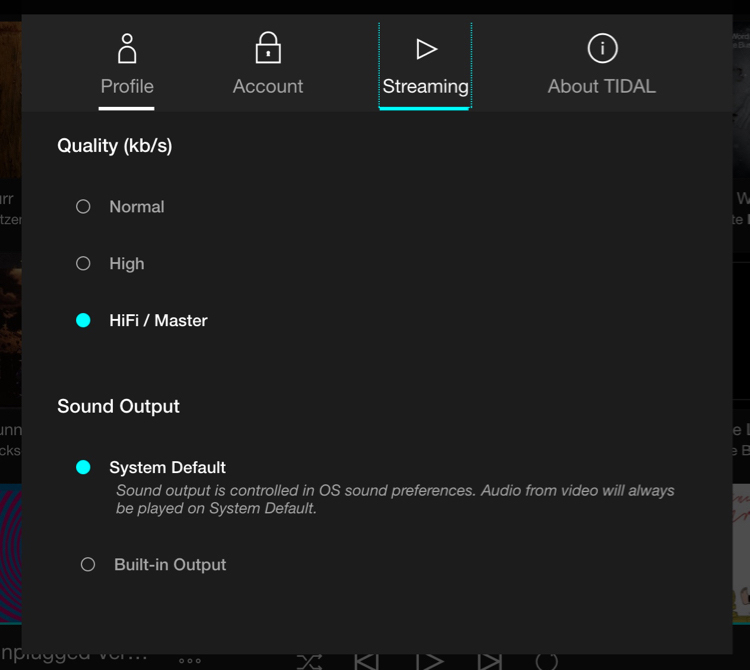
If you prefer to use TIDAL through Roon, then you’ll need to wait a short while. Currently Roon does not support the TIDAL / MQA files, but according to Rob Darling of Roon Labs, the two companies are working very closely on the project, and that they expect it to be available soon. And given Roon’s popularity, that is good news for us all! More than just another “music player”, Roon collects all of your music files, and enhances it with all of the latest metadata. What you get then, is a searchable surfable magazine about your music. If you haven’t yet, I highly recommend that you check it out!
At the time of this writing, TIDAL has about 500 albums in the Masters category (MQA Core), with many more waiting in the wings to be released. So even in the early stages, there’s plenty of material covering a wide variety of genres to choose from. To date, Warner Music Group and Universal Music Group have signed long-term agreements to encode their extensive catalogs of master recordings in MQA technology. Only Sony is currently missing from the big labels.
When you log into TIDAL, click on What’s New. In that view, scroll down until you see Albums. In there, you should see Masters. Click on that, and it will bring up all of the MQA albums.
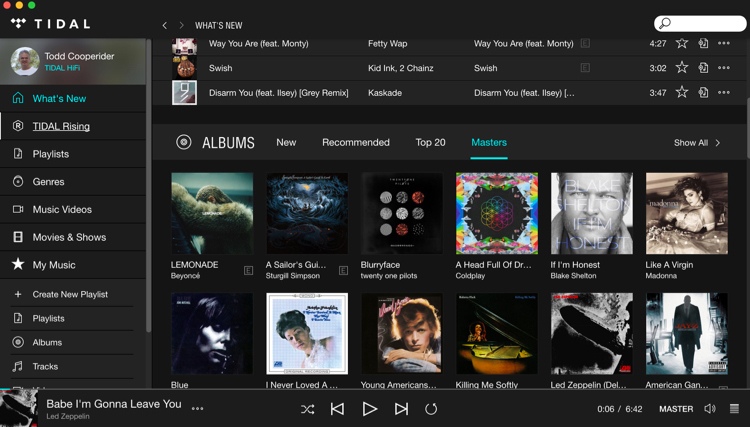
While MQA has been relatively slow to start since its introduction a few years ago, it is now picking up a lot of momentum that I see carrying forward at a rapid pace. There has been some pushback in the industry for MQA, particularly from DAC manufacturers who do not want to pay to incorporate the technology. There’s also more to that argument, but I will leave that to another article.
But now that we have MQA (Core) readily available through streaming services like TIDAL, and the engineering crowd of audiophiles acknowledging the fact that it does indeed work, it is my opinion that the flood gates are soon to be opened. We should be seeing a lot more MQA music available through TIDAL in the very near future, which is good for those of us who enjoy high quality audio without having to buy expensive downloads and equipment.
MQA Core decoding is also about to become more readily available with Roon and Audirvana who are very close to launching their new MQA features. Audirvana is a Mac-based audio library, streamer, and remote control platform aimed at the best possible sound quality, and they announced that they will be releasing their updates early in 2017.
I know for one, this writer looks forward to the increase in MQA music, and more ways to enjoy it.
We’ve discussed what MQA is, how it works, and how to get it, so we might as well get down to the details on how it sounds.
For my listening tests, I am currently just making observations on the MQA Core unfolding through my TIDAL account. Once I get my hands on a new MQA-certified DAC, I’ll be sure to post some follow-up observations.
The first listening evaluations and comparisons I did was on my headphone rig, and I tried that with 2 different variations. One was having my MacBook Pro going through a Chord Mojo headphone DAC/Amp, which was driving my Lawton Audio headphones. For the other configuration, I connected my MacBook Pro through my OPPO BDP-105D out to my Rudistor NX-33 headphone amp, then to my Lawton Audio cans (all connections fully balanced from OPPO through to Lawtons).
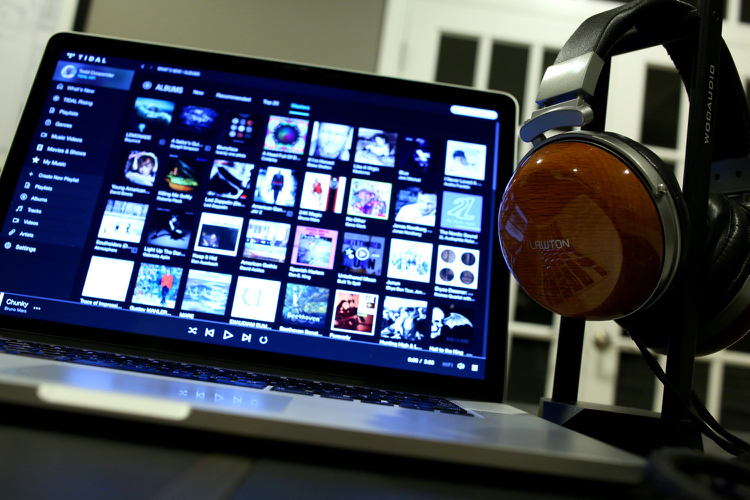
The second evaluation was done through my main system. Once again my MacBook Pro was sending the music through to my OPPO BDP-105D, then to my Pass Labs XP20 pre-amp, Pass Labs X250.5 amplifier, and finally Revel F208 speakers.
Throughout my listening, I mainly focused on Steely Dan’s Two Against Nature album from 2000. I love this album, and know it extremely well. I have the files available in MP3 (which most people would be accustomed to), and through TIDAL I could hear it in both CD and MQA formats.
Let me make the first part easy by saying that while most people would consider the MP3 file to sound “good”, they would quickly realize just how much they were missing as soon as they compared it to either the standard CD quality through TIDAL, or the MQA Core format. It’s this exact comparison that MQA would like to introduce the non-audiophile world to. If you have even a decent sound system or headphone setup, you will notice a considerable difference in sound quality. Those of us at SECRETS of Home Theater and High Fidelity also wish that more people would be able to make this comparison as well, because it will undoubtedly open up an entirely new generation of high quality audio fans.
For my listening tests, the MP3 to CD-quality or MQA comparison was over pretty quickly…there simply wasn’t a comparison.
But when it came down to comparing CD-quality to MQA Core, it became a much tighter race. When I did my comparisons with the 2 different headphone setups, I thought going in that the difference between the two would become greater once I switched up to the higher resolving OPPO BDP-105D / Rudistor NX-33 combination. But in actuality, I found that the similarities and separation of the two formats stayed the same whether it was through the Chord Mojo or the Rudistor. Granted, the overall sound quality increased (as it should) with the better gear, but the differences between the CD-quality and MQA were extremely subtle, and not to a level that most people with un-trained ears would notice.
When I switched over to my main system, the first file format to play was MP3. As expected, I couldn’t finish up the listening session quick enough. MP3 files may suffice with cheap earbuds through your phone, or in your average car stereo system, but it definitely doesn’t make the grade in high fidelity audio reproduction. It’s OK, you can call me an audio snob…I’m good with that.
When I then started the comparisons between TIDAL’s HiFi version and the MQA Core version, all was once again right in my audio world. Each track of this album is impeccably recorded and performed, and both file formats allowed me to really enjoy the music and the system. As with my headphone evaluation, I too found the differences to be very subtle. The HiFi version sounded “right”, and the MQA version offered up just a little more of everything. Like in many other hobbies, audio is a constant practice in the laws of diminishing returns. Rarely do we find quantum leaps in performance, and the jump from CD-quality reproduction to MQA files follows suit. And since we are so used to this, we accept small incremental increases as movement in the right direction.
The next interesting comparison will be with a true, MQA-equipped DAC (MQA Full Decoder). The MQA files through TIDAL limit us to an unfolding up to 17bit/96kHz, but through the proper DAC, we will be able to retrieve the full resolution of the original recording…be it 176.4kHz, 192kHz, 352.8kHz, etc. (If the original recording was done at these higher sample rates). Once again, these are claims made by MQA, and ones that as of right now I can neither confirm nor deny that they make any difference.
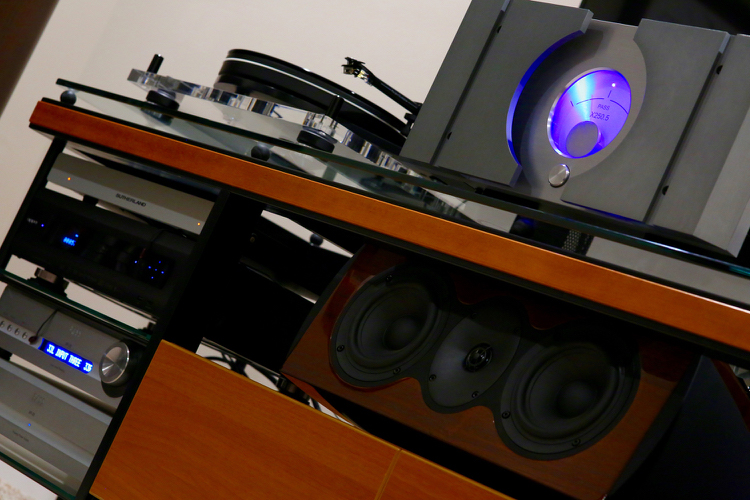
When it comes to advancements in technologies, I’m a glass half full kind of guy. I like to see innovation and advancements, because it inevitably offers better selection and performance to us as consumers. Granted, it also means that we are continually upgrading, but I would rather be faced with that as opposed to technologies going stale. When they go stale, people lose interest and go to another hobby.
For the audio world, I think that MQA is great. Is it a quantum leap in sound quality over the venerable CD? No, of course not…at least as it relates to the first level of decoding in MQA Core as available through TIDAL. Will we as the audio industry conclude that it’s a huge benefit once we get to spend some quality time with MQA-equipped DAC’s? I guess time will tell on that one.
For those who consider themselves music lovers, but not to the “audiophile” level, I certainly hope that they will take the time to experience what MQA has available. If you have even a modest sound system or headphone setup, then do yourself a favor and subscribe to TIDAL’s HiFi level. With that, you’ll get a massive step up in sound quality over MP3, you’ll have access to a very large database of CD-quality music, and you’ll get the opportunity to enjoy MQA Core-encoded files as well. But allow me to forewarn you though…once you follow the rabbit down the hole, there’s no coming back! High quality audio reproduction can become very addictive.
Personally, I plan on spending as much time as possible exploring the MQA Core (Master) library in TIDAL. Knowing the technology behind it, and experiencing even subtle differences to me is enough to embrace it. I hope that the rest of the industry embraces it as well, because there’s a lot of positive momentum that comes from technological advances like this.
If you have any additional questions regarding MQA, or if you would like to share some of your experiences with it, please be sure to leave a comment below!


